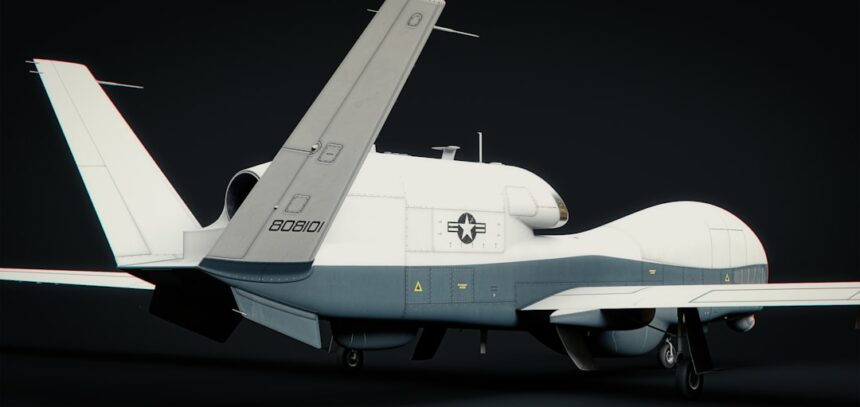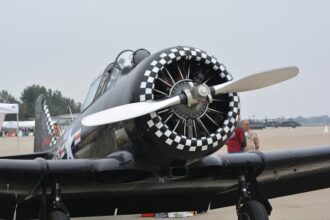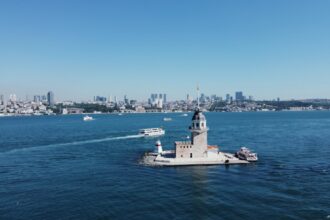T Force, a clandestine unit formed during World War II, played a pivotal role in the realm of naval espionage. This specialized group was tasked with gathering intelligence on enemy naval operations, technologies, and strategies, significantly influencing the course of the war. The very essence of T Force lay in its ability to operate under the radar, employing unconventional methods to extract vital information that would otherwise remain hidden.
As the war progressed, the importance of naval intelligence became increasingly apparent, and T Force emerged as a key player in this critical arena. The significance of T Force extended beyond mere intelligence gathering; it represented a shift in how naval warfare was conducted. By leveraging espionage techniques, T Force not only provided insights into enemy capabilities but also shaped the strategic decisions of Allied forces.
The unit’s operations were characterized by their agility and adaptability, allowing them to respond swiftly to the ever-changing dynamics of warfare. As the Allies sought to gain the upper hand against Axis powers, T Force’s contributions became indispensable, marking a new chapter in the history of naval intelligence.
Key Takeaways
- T Force was a crucial intelligence unit in naval espionage during World War II, playing a significant role in gathering information on enemy naval forces.
- The unit was formed from a combination of British and American intelligence personnel, and its contributions to Allied intelligence were invaluable.
- T Force conducted various operations and missions to gather intelligence on enemy naval forces, using technology and strategic planning to achieve their objectives.
- The impact of T Force on naval warfare was substantial, influencing Allied naval strategy and leaving a lasting legacy in naval intelligence.
- Despite their successes, T Force operatives faced numerous challenges and risks in their espionage activities, demonstrating their dedication and bravery in gathering vital intelligence.
The Origins and Formation of T Force
The origins of T Force can be traced back to the early years of World War II when the need for effective intelligence gathering became increasingly urgent. As the conflict escalated, it became clear that traditional methods of reconnaissance were insufficient to keep pace with the rapid advancements in technology and tactics employed by enemy forces. In response to this pressing need, military leaders recognized the necessity of forming a specialized unit dedicated solely to intelligence operations.
Thus, T Force was born. Initially, T Force was composed of a diverse group of individuals, including military personnel, intelligence officers, and experts in various fields. This eclectic mix of skills and backgrounds allowed T Force to approach intelligence gathering from multiple angles, enhancing their effectiveness.
The unit was designed to be highly mobile and adaptable, capable of operating in various environments and under challenging conditions. As they began their operations, T Force quickly established a reputation for their innovative approaches and successful missions, solidifying their place within the broader framework of Allied intelligence efforts.
T Force’s Contribution to Allied Intelligence

T Force’s contributions to Allied intelligence were profound and far-reaching. One of their primary objectives was to gather information on enemy naval capabilities, including ship designs, weaponry, and operational strategies. By infiltrating enemy installations and conducting covert operations, T Force was able to obtain critical data that would inform Allied decision-making.
This intelligence not only provided insights into enemy strengths but also revealed vulnerabilities that could be exploited in battle. Moreover, T Force played a crucial role in the analysis and dissemination of intelligence findings. The information they gathered was meticulously processed and shared with other Allied units, ensuring that commanders had access to the most up-to-date intelligence available.
This collaborative approach fostered a sense of unity among Allied forces and allowed for more coordinated military strategies. The impact of T Force’s contributions was felt not only during the war but also in the post-war period as nations sought to understand the lessons learned from their experiences.
T Force’s Operations and Missions
| Mission | Location | Duration | Objective |
|---|---|---|---|
| Operation Enduring Freedom | Afghanistan | 2001-2014 | To dismantle the Al-Qaeda terrorist network |
| Operation Inherent Resolve | Iraq and Syria | 2014-present | To defeat ISIS and stabilize the region |
| Operation Atlantic Resolve | Eastern Europe | 2014-present | To demonstrate commitment to NATO allies and deter Russian aggression |
The operations conducted by T Force were as varied as they were daring. From conducting reconnaissance missions in enemy territory to intercepting communications, each operation was meticulously planned and executed with precision. One notable mission involved infiltrating German naval bases to gather intelligence on U-boat operations.
By obtaining detailed information about U-boat designs and tactics, T Force provided invaluable insights that helped Allied forces develop countermeasures against these formidable threats. In addition to direct intelligence gathering, T Force also engaged in sabotage operations aimed at disrupting enemy supply lines and communication networks. These missions were fraught with danger, as operatives often found themselves behind enemy lines with limited support.
However, the risks were deemed necessary in order to achieve strategic objectives. The success of these operations not only hindered enemy capabilities but also boosted morale among Allied troops, demonstrating that they could strike back against their adversaries.
The Impact of T Force on Naval Warfare
The impact of T Force on naval warfare was significant and transformative. By providing critical intelligence on enemy movements and capabilities, T Force enabled Allied commanders to make informed decisions that ultimately shaped the outcome of key battles. The information gathered by T Force allowed for more effective deployment of naval assets, ensuring that resources were allocated where they would have the greatest impact.
Furthermore, T Force’s operations contributed to a broader understanding of naval warfare dynamics. The intelligence they provided helped Allied forces adapt their strategies in real-time, allowing them to counteract enemy tactics effectively. This adaptability was crucial in an era where technological advancements were rapidly changing the landscape of warfare.
As a result, T Force not only influenced individual battles but also contributed to a shift in how naval warfare was conceptualized and executed.
T Force’s Role in Gathering Intelligence on Enemy Naval Forces

T Force’s primary mission revolved around gathering intelligence on enemy naval forces, a task that required both ingenuity and courage. Operatives often found themselves in precarious situations as they sought to infiltrate enemy installations or intercept communications. Their ability to blend into various environments allowed them to gather information that would have otherwise remained inaccessible.
This intelligence was critical for understanding enemy capabilities and intentions. One of the most notable aspects of T Force’s intelligence-gathering efforts was their focus on technological advancements within enemy navies. By studying captured documents and materials, operatives were able to provide insights into new weapon systems and naval technologies being developed by Axis powers.
This information proved invaluable for Allied scientists and engineers as they worked to develop countermeasures and enhance their own naval capabilities.
T Force’s Use of Technology in Naval Espionage
The use of technology played a crucial role in T Force’s operations, enabling them to conduct espionage activities with greater efficiency and effectiveness. From advanced communication devices to surveillance equipment, T Force leveraged cutting-edge technology to enhance their intelligence-gathering efforts. This technological edge allowed them to operate more discreetly while maximizing their ability to collect valuable information.
Additionally, T Force utilized innovative methods for analyzing and disseminating intelligence findings. By employing data analysis techniques and collaborating with experts in various fields, they were able to process vast amounts of information quickly. This capability ensured that critical insights reached decision-makers promptly, allowing for timely responses to emerging threats.
The integration of technology into their operations not only improved efficiency but also set a precedent for future intelligence-gathering efforts.
T Force’s Influence on Allied Naval Strategy
T Force’s influence on Allied naval strategy cannot be overstated. The intelligence they provided directly informed strategic decisions made by military leaders throughout the war. By understanding enemy capabilities and intentions, Allied commanders were able to devise more effective operational plans that capitalized on weaknesses while mitigating risks associated with enemy strengths.
Moreover, T Force’s contributions fostered a culture of collaboration among Allied forces. The sharing of intelligence findings encouraged joint operations and coordinated strategies across different branches of the military. This collaborative approach not only enhanced overall effectiveness but also strengthened alliances among nations fighting against Axis powers.
The lessons learned from T Force’s influence on naval strategy would continue to resonate long after the war ended.
T Force’s Legacy in Naval Intelligence
The legacy of T Force in naval intelligence is one marked by innovation and adaptability.
The emphasis on covert operations and technological integration established a new standard for how naval forces approach espionage and reconnaissance.
Furthermore, T Force’s success demonstrated the importance of intelligence in shaping military outcomes. Their ability to gather critical information under challenging circumstances highlighted the value of investing in specialized units dedicated to intelligence operations. As nations continue to navigate complex geopolitical landscapes, the lessons learned from T Force’s legacy remain relevant in contemporary discussions about naval strategy and intelligence.
Challenges and Risks Faced by T Force Operatives
Despite their successes, operatives within T Force faced numerous challenges and risks throughout their missions. Operating behind enemy lines often meant navigating hostile environments where capture or death was a constant threat.
Additionally, the nature of espionage work meant that operatives had to rely on limited resources and support networks. Many missions required them to operate independently or with minimal backup, increasing the likelihood of failure or exposure. Despite these challenges, T Force operatives demonstrated remarkable resilience and ingenuity, often finding creative solutions to overcome obstacles in pursuit of their objectives.
T Force’s Enduring Impact on Naval Espionage
In conclusion, T Force’s enduring impact on naval espionage is evident through its innovative approaches and significant contributions during World War
As military strategies evolve and new technologies emerge, the principles established by T Force remain relevant today. Their emphasis on adaptability, collaboration, and technological integration serves as a guiding framework for contemporary naval forces engaged in intelligence operations. Ultimately, T Force stands as a testament to the power of espionage in warfare—a reminder that knowledge is often as potent as firepower in determining victory on the high seas.
In the intricate world of naval espionage, the role of T Force has been pivotal in shaping modern intelligence strategies. T Force, a specialized unit during World War II, was tasked with securing valuable intelligence and technology from enemy territories. Their operations laid the groundwork for contemporary espionage tactics used by naval forces worldwide. For a deeper understanding of T Force’s impact and legacy, you can explore a related article on this topic by visiting this page. This article delves into the historical significance of T Force and its contributions to naval intelligence operations.
WATCH THIS! America’s Nuclear Navy Was Born From Espionage
FAQs
What is the T Force in naval espionage?
The T Force is a specialized unit within a naval intelligence agency that is responsible for conducting espionage operations, gathering intelligence, and carrying out covert missions to support naval operations.
What is the role of the T Force in naval espionage?
The T Force plays a crucial role in gathering intelligence on enemy naval activities, capabilities, and intentions. They also conduct covert operations to gather information on enemy naval assets, such as ships, submarines, and naval bases.
How does the T Force gather intelligence in naval espionage?
The T Force uses a variety of methods to gather intelligence, including human intelligence (HUMINT), signals intelligence (SIGINT), imagery intelligence (IMINT), and open-source intelligence (OSINT). They may also use covert surveillance, reconnaissance, and infiltration techniques.
What are some examples of T Force operations in naval espionage?
T Force operations may include infiltrating enemy naval facilities to gather intelligence, conducting covert surveillance of enemy naval assets, intercepting and decoding enemy communications, and carrying out sabotage or disruption of enemy naval operations.
How does the T Force support naval operations through espionage?
The intelligence gathered by the T Force helps naval commanders make informed decisions about deployment, tactics, and strategy. This intelligence can also be used to identify and neutralize threats to naval forces, as well as to gain a strategic advantage over enemy naval forces.




